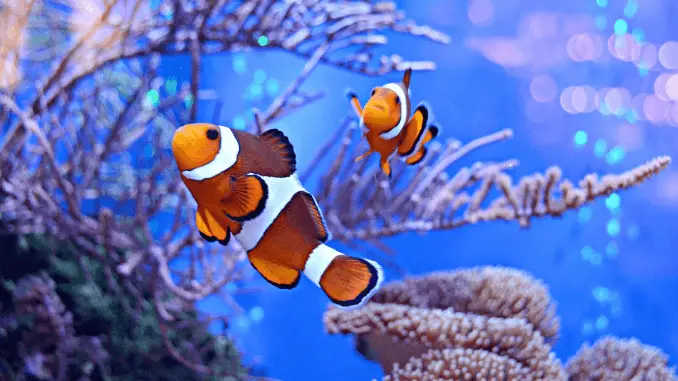
All living things reproduce; this is an essential part of survival for each species to ensure they do not become extinct. Freshwater and saltwater fish are no exception.
Much like many other animals, most fish require both a male and a female to create new life; however some fish are asexual and can reproduce alone.
There are two things the vast majority of fish have in common:
- They are vertebrates
- They live in water
Other than that the rest of their traits vary widely, including the many different ways of mating and creating new life.
In this article, we’re going to take a look at the reproductive anatomy of fish, different ways in which fish mate.
We’ll then dive into some of the most popular breeds and discuss how to create the perfect conditions to allow you to breed them in your aquarium.
TABLE OF CONTENTS
Reproductive Anatomy of Fish
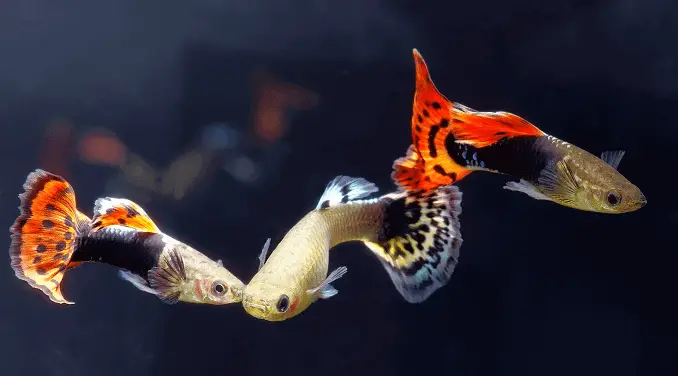 All species of fish reproduce. Whilst reproduction is not necessary for each individual fish to survive, it is essential for the species as a whole to survive.
All species of fish reproduce. Whilst reproduction is not necessary for each individual fish to survive, it is essential for the species as a whole to survive.
So, how exactly do fish reproduce?
To understand how fish mate, it’s important to understand their reproductive organs.
For fish to reproduce, sperm and an egg must be combined to create new life.
Whilst there are a few different ways in which this can occur, one common factor is the reproductive organs involved; the ovaries and the testes.
The vast majority of fish are dioecious (the sexes are separated), females have ovaries and males have testes. There are a few species which contain both sets of organs (hermaphrodites); we’ll discuss this later in the article.
Some species also have secondary organs known as genital papilla. This is a small fleshy tube found at the back of the anus from which sperm is released.
Classifications of Reproduction
There are three main classifications of reproductive strategies that can be used to classify fish:
- Oviparity
- Ovoviviparity
- Viviparity
Oviparous Fish (Egg Layers)
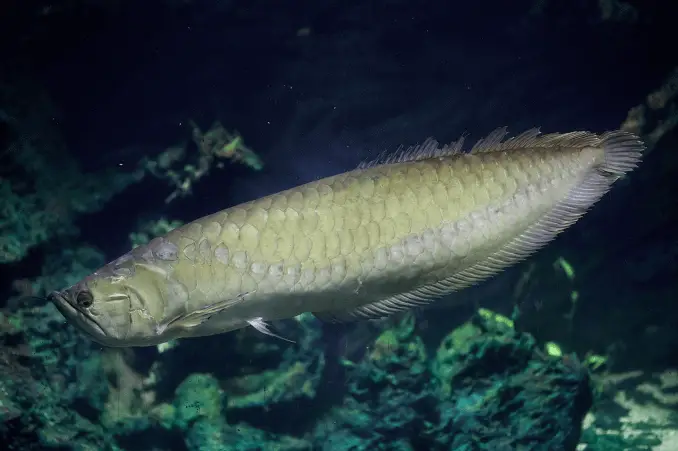
Similarly to insects, birds and reptiles, in oviparous fish, the embryo develops inside the egg, but outsideof the parent’s body. Over 90 percent of bony fish are oviparous reproducers.
This method of breeding requires the female to lay eggs, which will then be fertilized by the male.
Most females can lay large amounts of eggs at one time, because it takes much less energy than growing an embryo in an egg inside her body. The number of eggs a female is able to produce during a spawning season is called the ‘fecundity’. The fecundity of a fish is closely related to the weight and length of the fish.
As an example, the Mola (Ocean Sunfish) releases around 300 million eggs in a spawning season whereas the Silver Arowana only lay around 50-250 eggs per season.
The fertilization can be done in a number of different ways; either by the male rubbing his sexual organs on the eggs, releasing sperm, or releasing sperm into the water to join the eggs in the zooplankton layer (if the eggs have been laid in that way).
Egg-layers fall into one of these categories:
- Mouthbrooders:Eggs are laid in water then collected in the mouth once fertilized. (Bettas, Cardinal fish, Blennies, Gobbies & freshwater Cichlids).
- Nest Builders:Made from plant materials or a bubble nest, usually built by the male and the female then deposits her eggs there and the male fertilizes them. (Bettas, Gouramis, Bluegills & Stickle-backs).
- Egg Scatterers:Sticky eggs are laid in an area usually under cover; non-sticky eggs are laid in open water. The male then fertilizes the eggs by swimming through and spraying semen in the area. (Cardinal tetras, Zebra Danios, Tiger Bards, Koi & Goldfish).
- Egg Depositors:Eggs are laid in one spot, the male then swims past and fertilizes them. (Killifish, Dwarf Cichlids, Clownfish & Rainbowfish).
- Egg Buriers:Eggs are buried in the substrate and the male then dives into the substrate to fertilize the eggs. (Killifish).
Ovoviviparous and Viviparous Fish (Livebearers)
In livebearers, the fertilization and the development of the embryo take place inside the mother.
The female is impregnated by the male’s modified anal fin, known as the gonopodium. Sperm is released from the fin into the female’s body.
Ovoviviparous reproducers develop their young inside an egg inside the mother’s body but they do not receive any nutrition from their mother’s body, instead they use the egg’s yolk to develop.
In viviparous reproducers, the fertilization and development of the young also occurs in the mother’s body, however the embryos receive nourishment from the mother.
Once the embryos are fully developed, the mother then gives birth to live young.
More Unusual Ways Fish Mate
Unisex Fish
Some species of fish reproduce by themselves. These fish are females, and so are the young they give birth to.
It’s debatable whether this can actually be called ‘mating’ but it is certainly a way to reproduce.
The females may mate with males, but the sperm is not used for reproduction.
Hermaphrodites
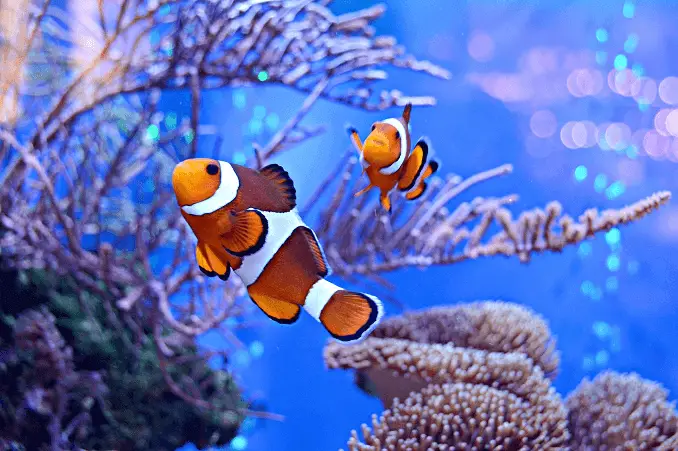
Hermaphrodites possess both male and female reproductive organs. Typically fish are born one sex and at a later age will switch to the opposite gender.
A female switching to a male is called a protogynous hermaphrodite; males switching to females are classified as protandrous hermaphrodites. Both of these types of reproducers still need a fish of the opposite sex to reproduce.
A clownfish is a great example of a hermaphrodite. A group of clownfish will include one large male, and one large female, the rest of the group are small males. Once the female leaves the group, her partner will turn into a female and the next largest fish will become the new partner.
A small amount of species, fall into the classification of synchronous hermaphroditism, which means they can produce eggs and sperm at the same time, for example the Mangrove Killifish.
About Fish Mating
When is a Fish Mature Enough to Reproduce?
Reproductive organs are usually the slowest organs to develop because they are not essential for survival at birth.
Different species reach sexual maturity at different ages; their readiness very much depends on the species, size and age of the fish. In general the smaller the size of the adult fish, the sooner they will be able to reproduce.
Some fish begin reproducing very soon after their own birth whereas others take years to reach maturity before they are able to reproduce.
How often do Fish Mate and Reproduce?
The reproductive cycle varies widely depending on the species.
Some fish reproduce multiple times throughout the year (e.g. Clownfish, Guppies, Mollies, Swordtails and Platys), others only reproduce during a particular season, and some only ever reproduce once and die when their sperm or egg is released (e.g. The Pacific Salmon).
Egg Layers vs Livebearers
If you’re just starting out, we recommend starting out with breeding livebearers. They are, in general, easier to breed than egg-layers.
Species such as Guppies and Platies don’t require much help or specific conditions so they are a good choice for beginner breeders.
Once you have some experience with live bearing fish, you can move on to more hardy egg-laying fish such as Barbs and Danios.
The advantages of breeding livebearers rather than egg-layers are that the parents mate easily without much help and once their fry are born, they are much less needy.
How to Breed Fish in your Aquarium
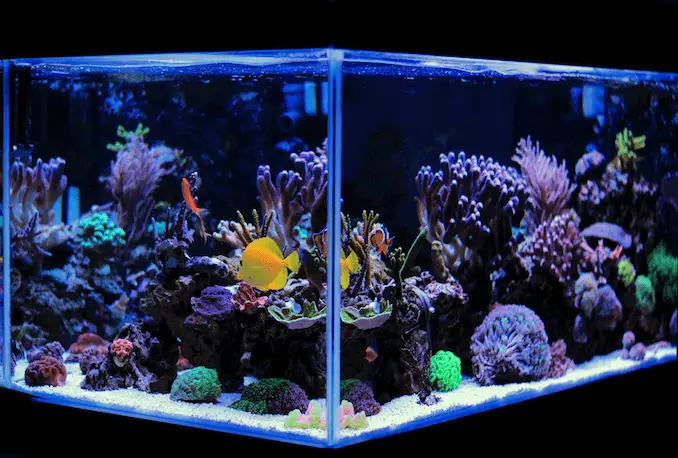
Choosing the Right Parent Fish
When you choose your fish, you need to make sure that you have at least one male and one female (the ratios vary depending on the species).
Most fish are either sexually dimorphic or sexually isomorphic:
- Sexually dimorphic species can easily be distinguished by looking at them. Their sex organs are shaped differently, and the size, shape, and color is different. Males tend to be larger and more vibrant than females.
- Sexually isomorphic species have very few differences, if any at all, so are more difficult to sex. Sometimes the only way to determine the sex in sexually isomorphic species is by looking at the shape of the genital papilla at the time of spawning.
You can research each species to find out the differences to ensure you buy the right sexes.
Other than ensuring you select the right sex, you need to make sure the parent fish have good colorings and markings and that they are healthy and mature. It is also vital that they are compatible. In some species such as certain cichlids, a pair will only form within a group after they’ve been raised together. If some species are just thrown together, one may bully the other to death.
If you’re choosing a species which do not breed easily, keep an eye out for those displaying courting behavior.
Once you have chosen a suitable pair (or group if they are shoaling fish) they should be conditioned. Conditioning means to feed the fish a variety of foods to ensure they are in the best shape possible before they breed.
If you buy your fish in late winter/early spring, they will likely already have been conditioned and they’ll be ready to breed.
Setting the Right Tank Conditions
It’s essential to understand the tank conditions, size, breeding environment and spawning behaviors of each species if you want to breed successfully. Some species require bare tanks or a separate tank for breeding and raising the fry, other species require certain plants, water flow.
Bring the water pH and hardness to the required levels (specific to each species) and also raise the tank water temperature by about 10F above its usual temperature.
By separating the male and female fish with a glass partition, this also increases the desire to breed when they are given the chance.
We’ll look at a few popular breeds below and each of their requirements. If your breed isn’t listed below, you should research the tank conditions and environment needed before starting to breed them.
How Popular Breeds Mate (+ Optimal Tank Conditions)
We’re now going to take a look at two popular species that people like to breed; Bettas and Goldfish.
We’re not going to go into detail about how to breed other popular live bearing fish (such as Guppies and Platies) because they are quite straight forward to breed and don’t require really stringent tank conditions.
Breeding Betta Fish
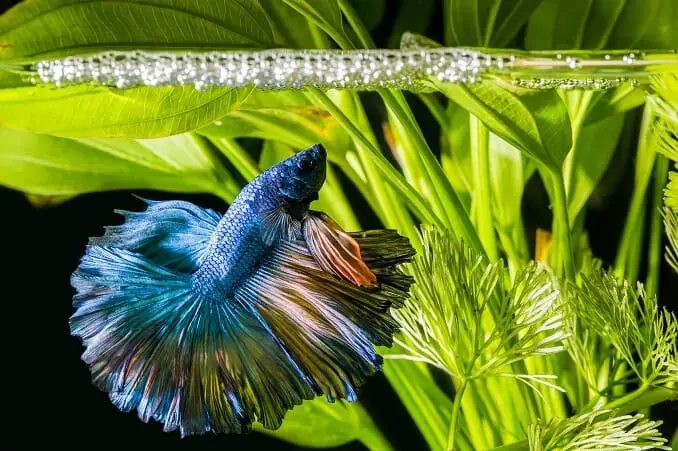 Tank Conditions
Tank Conditions
It’s vital to get the tank conditions right before attempting any mating. You’ll need a sponge filter, floating plants and newly hatched brine shrimp, or other adequate food to feed the fry.
It goes without saying that any tank you are putting fish into should be cycled.
The water in your tank should be heated up to around 82oF (28oC). You should ensure the rest of your water parameters are reading correctly before you attempt to breed.
If you’re using a specific breeding tank, it should be between 5 and 10 gallons. Place a removable divider in the center to separate the male and female before you introduce them together.
Leave the bottom bare – if eggs fall they will get lost in substrate at the bottom.
Mating Ritual
Male Bettas reach sexual maturity at around 3 ½ months. A sign that they are ready to start mating is when they begin to establish bubble nests. Females develop upright bar markings on the side of their bodies which indicate they have reached sexual maturity too.
Remove the divider once the male Betta has built a bubble nest (this can take anywhere from a few hours to a few days).
When they are first placed together, you may notice them fighting. This is normal, and part of the mating ritual but keep an eye on them to make sure neither is injured.
If a male is interested in the female he will flare out his gills, spread his fins and twist his body. If a female is interested she will curve her body back and forth and turn a darker color.
When the female is ready to mate, she will spend a lot of time near the bubble nest.
The male will circle her and take his time in deciding the best positioning. They will then embrace (known as the nuptial embrace) for a few seconds, and the female will release eggs. Each time they embrace the female will release between 10 and 40 eggs. The embracing will continue until the female has no eggs left.
The female should be removed from the tank as soon as she has released all her eggs – she will usually eat the eggs.
Once she has been removed, the male will fertilize the eggs by released milt into the tank. The male will collect them and put them in the bubble nest and continue to care for them for the next 24 – 36 hours, continuing to return the eggs to the bubble if they fall.
The male is usually removed from the tank once the fry emerge.
Breeding Goldfish
 Tank Conditions
Tank Conditions
Again, you need to ensure your tank is fully cycled and stable, and large enough to house an adult goldfish.
The tank should be well planted, and kept at around 64OF for approximately four months.
The tank should then slowly be re-warmed to 70-74OF over a two week period. This will mimic the breeding season which they are used to in the wild, and will initiate mating.
Mating Ritual
You should have at least one 3 year old male and female in your tank. Younger females can reproduce, however they can become egg-bound which is dangerous for them.
Signs that your goldfish are ready to mate include white spots along the gills of the males, and the female will become fatter and more rounded.
The male will then chase the female around the tank to encourage her to release her eggs. This ritual is extremely energetic and when the female becomes so tired she can’t continue, she’ll release the eggs. She’ll release up to 10,000 eggs.
The eggs will stick to plants and the wall of your tank, and the male will then release his milt to fertilize the eggs. This may make the water cloudy – but that’s normal.
Fertilized eggs will be clear, and unfertilized eggs turn white. Remove the unfertilized ones as they usually develop fungus which can pollute your water.
You can then either remove the fertilized eggs into a new tank, so the adults don’t eat them.
Five Things you didn’t know about Fish Mating
- Female fish are attracted to males who flirt with other males.
- The annual Sardine Run in South Africa produces so many eggs and sperm that it is visible from the air.
- Some Killifish lay eggs that survive even when the puddle they live in dries up, and then hatch again when it rains.
- The Splashing Tetra jumps out of the water to deposit its eggs on an overhanging leaf, it will then splash the eggs to keep the wet, and they’ll fall back in as they hatch.
- Freshwater Gars produce eggs that are poisonous if eaten!
Summary
There are a variety of ways that fish mate and reproduce.
Some keep it quite plain and simple like us humans and the male inseminates the female who then grows the fish inside her body whilst nourishing it. Whilst others lay eggs which are then fertilized by the male.
There are plenty of breeds of aquarium fish which are relatively easy to breed so if you’re a beginner, start with one of the easier breeds listed above.
The tank conditions and mating rituals very much depend on the specific species, so if you are a more advanced fish keeper wanting to breed more difficult species, always research the conditions they need.
Did you know there were so many ways which a fish can mate? Do you have any experience of breeding any unusual fish? We’d love to hear from you; let us know in the comments section below…




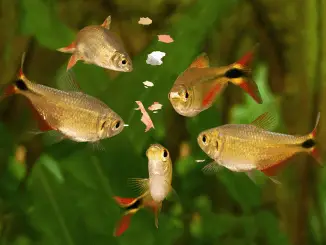
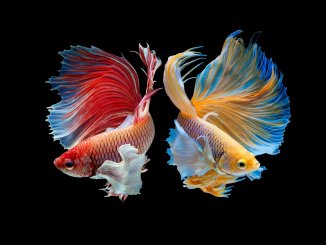
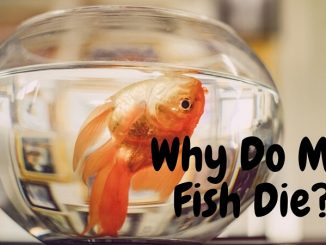
Be the first to comment